Oculus VR Reveals Retail Price of Its Virtual Reality Headset: $599
by Anton Shilov on January 7, 2016 1:03 AM EST- Posted in
- VR
- GPUs
- Oculus Rift
- CES 2016
- Oculus

Oculus VR on Wednesday revealed the price of its Oculus Rift virtual reality headset as well as its launch date. The price of the VR hardware appears to be considerably higher than expected by gamers and industry analyst. The developer claims that the high price is conditioned by high costs and the use of custom hardware. However, such price point may slowdown adoption of virtual reality technologies by the masses.
The Oculus Rift bundle includes the VR headset, an Xbox One gamepad, a sensor, the Oculus Remote controller as well as EVE: Valkyrie and Lucky's Tale VR games. The initial bundle will not include the Oculus Touch controllers, which were recently delayed to the second half of the year. The Oculus Rift virtual reality headset is available for pre-order for $599 on the company’s web-site and will ship starting March 28, 2016, to 20 countries. Select retailers will also sell Oculus Rift hardware in April. In addition, makers of gaming PCs plan to offer Oculus Ready PCs with the headset next month starting at $1499.
Back in early October, 2015, Palmer Luckey, the founder of Oculus VR, said in an interview that the price of one Oculus Rift headset was in the “$350 ballpark”, but it was “going to cost more than that”. As it appears, the virtual reality head mounted display (HMD) costs nearly two times more than that. The $599 price-point is a yet another indicator that the first-generation VR headsets are expensive to make in general. However, that price is too high for the mass market and for many gamers, believes Jon Peddie, the head of Jon Peddie Research, which tracks sales of graphics adapters and PC gaming hardware.
A Lot of Custom Hardware
While the virtual reality HMD is available for pre-order now, Oculus VR still has to confirm its final technical specifications. Based on what the company revealed about six months ago, the Oculus Rift uses two custom AMOLED panels (one per eye) with 2160×1200 resolution and 90 Hz refresh rate (1080×1200 per eye). The AMOLED displays were architected for low persistence, they display each image for about 2 ms in a bid to minimize delays and avoid effects like motion blur, which can cause nausea. The headset also features specially designed adjustable lenses to enable wide field of view. Each headset has integrated headphones and a microphone. Besides, the Oculus Rift sports various sensors, including the company’s own Constellation system based on infrared sensors, which tracks position of the user’s head.
To connect to a PC, the Oculus Rift and devices that accompany it (gamepad, sensor, remote, etc.) use one HDMI 1.3/HDMI 1.4 interconnection, three USB 3.0 interconnections and one USB 2.0 interconnection.
The Oculus Rift virtual reality headset uses a lot of custom components that were designed specifically for this device. For example, the low-persistence AMOLED display panels were co-developed by Oculus and Samsung Electronics. Oculus VR claims that they wanted to make a device that will offer the best virtual reality experience possible today, which is why they tried to avoid any trade-offs or compromises. Due to extensive usage of parts that are not mass-produced today, the cost of each Oculus Rift should be rather high, which is one of the reasons why the headset is priced at $599.
High-End PC Needed
Since the Oculus Rift should run games in 2160×1200 resolution at 90 Hz with minimal latency, it requires a rather powerful personal computer to offer comfortable experience. Oculus VR recommends a PC with a quad-core Intel Core i5-4590 microprocessor (or equivalent), an AMD Radeon R9 290 or NVIDIA GeForce GTX 970 graphics adapter (or equivalent) as well as 8GB of RAM. The company admits that the more powerful your system is, the better experience with Oculus Rift you are going to get.
Developers of graphics processing units have implied multiple times that for the best VR experience a dual-GPU graphics sub-system is required today. For example, AMD plans to align release of its new dual-chip Fiji video card with availability of VR headsets in the second quarter. In a dual-GPU graphics sub-system, each graphics chip renders its own part of the scene for one eye. Such approach doubles performance and lowers latency. However, two GPUs also require a more powerful central processing unit as well as a high-end power supply unit.
For makers of computer hardware the launch of the first VR headset for gamers means a chance to improve sales of their higher-end products. Not only manufacturers of video cards or microprocessors can benefit from availability of the Oculus Rift, but also producers of RAM, solid-state drives and motherboards can take advantage of the headset as enthusiasts begin to build their new systems. Unfortunately, significant investments in hardware may slowdown adoption of virtual reality HMDs by both gamers and the general public.
Oculus VR: 100+ Virtual Reality Games to Be Available in 2016
Oculus VR claims that more than 100 games designed for virtual reality and compatible with the Rift are set to be available by the end of 2016, including “dozens of full-length AAA” games. The company does not reveal a lot of names, but in addition to the titles bundled with the VR headset, the firm mentions Rockband VR by Harmonix, Edge of Nowhere by Insomniac, and The Climb by Crytek.
While over a hundred of titles that support VR is a lot, only a handful of them will actually attract users to the platform. Since $599 is a significant investment for many gamers, there should be several compelling titles, which not only demonstrate the technology itself, but make people want to play.
A Lot of Excitement
There is a lot of excitement about virtual reality technologies not only among gamers, but also among developers of hardware and software. While the technology itself has a lot of potential for video games and beyond, the very first Oculus Rift headset is designed primarily for games. The price of the HMD is high for many gamers, but for general users it is prohibitively expensive. Therefore, sales of the device will likely be rather limited. In fact, even Facebook, the owner of Oculus VR, does not expect to sell a lot of VR headsets this year.
Sales enthusiast-class graphics cards, which cost $399 and higher, total approximately three million units a year, according to Jon Peddie Research. There are many PC gamers nowadays, but only a fraction of them invests thousands of dollars in hardware. Various analysts make different predictions about sales of the first-generation VR gear, some are optimistic and some are pessimistic. For example, according to a report released by Juniper Research several months ago, cumulative sales of VR headsets in their first year of availability (i.e., 2016) will be approximately three million units. There are three major VR devices to be released this year: the Oculus Rift, the Vive from HTC and the PlayStation VR from Sony. It is highly likely that the majority of hardcore enthusiast gamers will buy only one of them. Juniper predicted that cumulative sales of VR headsets will hit around 30 million units by 2020 as hardware and software evolves.
It remains to be seen how many virtual reality head-mounted displays Oculus VR will sell this year. Palmer Luckey said in an interview that the first consumer version of the Oculus Rift was developed to offer great experience and to show potential of the technology to the world. Hopefully, it will deliver to the promise.


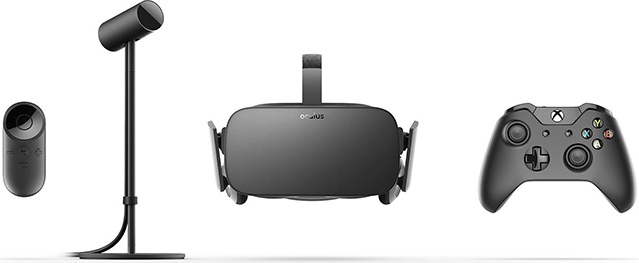
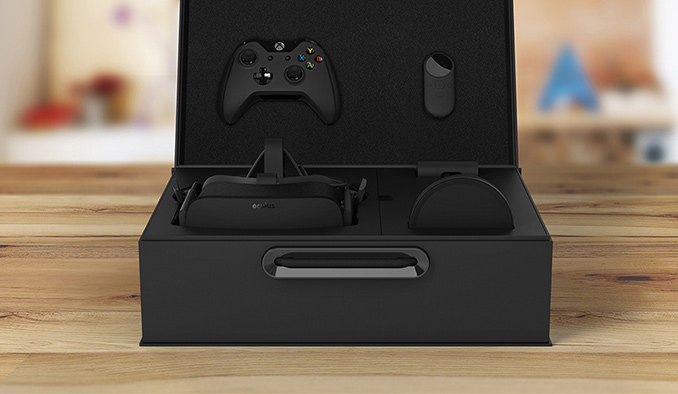
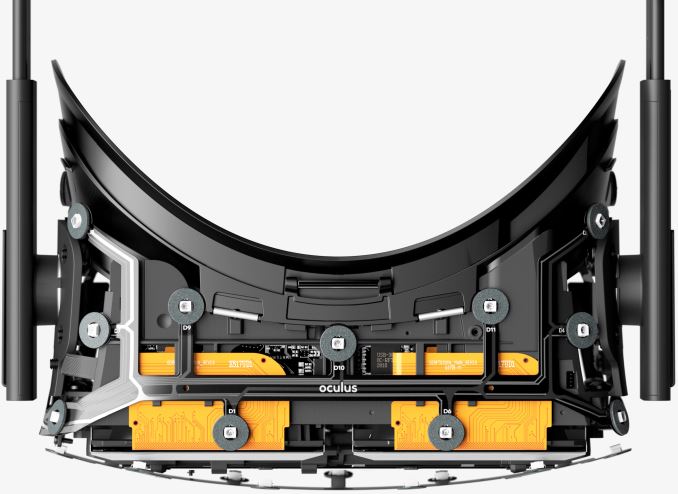
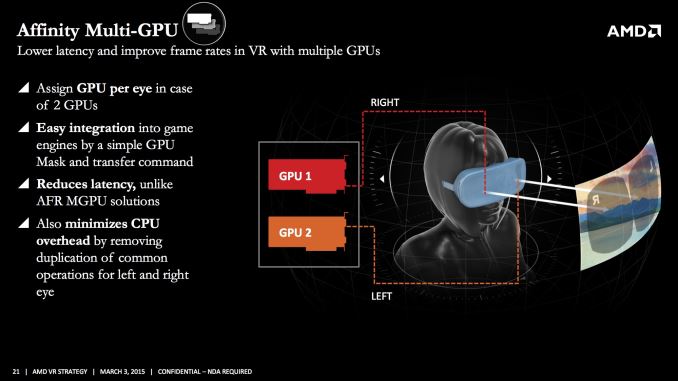

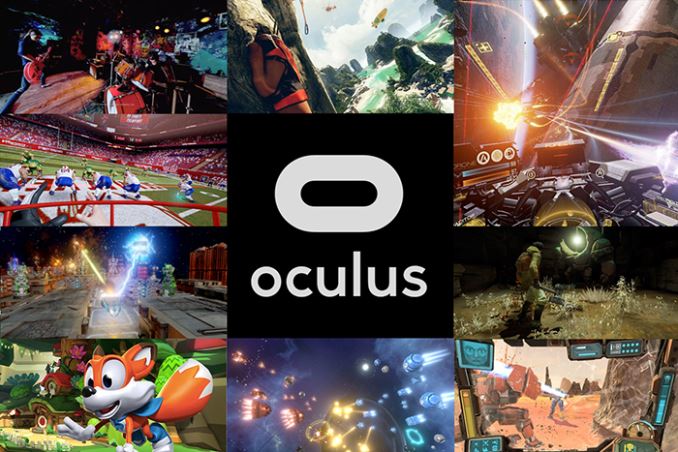
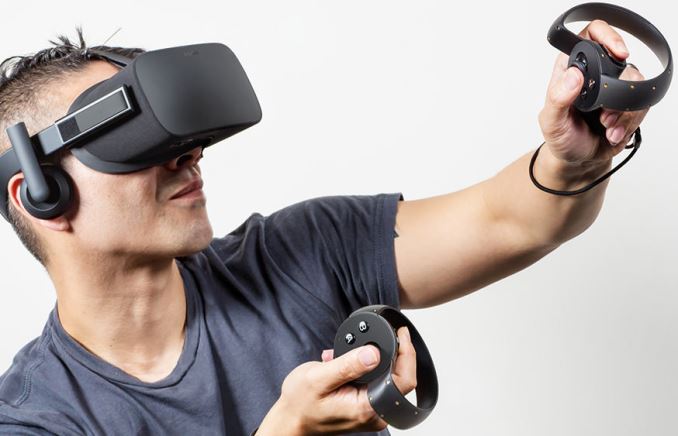








75 Comments
View All Comments
Murloc - Thursday, January 7, 2016 - link
still, the inclusion of the xbox controller is a sign that for many games the Rift will just be a head-mounted 3D display and not virtual reality.Dribble - Thursday, January 7, 2016 - link
Everyone was proclaiming 2016 as the year of VR, you only need a $600 set of glasses and a $600 graphics card to go with it. That entry cost means a tiny market, a tiny market means no one is going to write VR games as it's just not worth it. No games and it has no chance.Quite aside from the fact that VR has a whole host of other problems:
-it will make a lot of people feel sick, they will hate it. There are ideas to improve this but it'll be 2018 at the earliest before any headset incorporate them.
-it's completely isolating, you can't see anything else. Even 3D gaming allows you to glance at a second monitor and look around. You can't see your keyboard, or mouse, or even xbox controller: how many pc gamers even know all the controller buttons off by heart?
-the headsets are still too big and too heavy.
-the control scheme still hasn't been worked out. An xbox 1 controller is hardly great. Anything else that involves you waving your arms around will tire most people out after 10 mins so don't work either.
Not to say VR doesn't have a future but you know at the end of 2016 it'll be VR that people talk about as the big thing that didn't happen.
bug77 - Thursday, January 7, 2016 - link
About your last bullet point: waving your arms around blindfolded is a big no-no in virtually every room even without considering the effort.Murloc - Thursday, January 7, 2016 - link
there are VR treadmills that keep you in place while walking and waving your arms so that problem can be fixed.Murloc - Thursday, January 7, 2016 - link
1. 3D did too, 3D cinema didn't die because of it, although home 3D did so it will be interesting to see2. real VR games will use gestures and special controllers or actual virtual reality harnesses, while for games that use the Rift just as an enveloping 3D display, it won't be a problem if they don't need too many keys to be played. Console games have various ways to work without all the keys, like selector wheels to select weapons and stuff. This can easily be ported to the PC so that people don't need to use e.g. the number keys.
3. true
4. what's the point of virtual reality if you don't want to move?
Besides regarding both 4 and 2: you can always put a virtual controller cheatsheet in-game so that you can see the controller and the location of the keys.
At the end of 2016 VR won't have happened, it's still a bit too futuristic, but progress often just looks like this. It's not a problem if you don't fall for the hype.
Dribble - Thursday, January 7, 2016 - link
1. That's partly because the 3D cinema's provide is much more advanced then the 3D home TV's provide so the 3D effect is better and sickness effects are significantly lessened due to various techniques they use. VR headsets are like home TV's, not like the massively expensive cinema set-up right now. There are ways to make them better but they take time and development like everything else.2. But those controllers don't really exist yet, and how the gestures will work doesn't really exist either. Not saying it can't be done but it hasn't been done yet. Using an xbox controller is flawed as most people like to look at it from time to time to see which button to press, it's also not a very immersive method of control. Also isolation just means you can't be doing anything else at the same time or talking to a real person in the same room. Personally I think just using your hands would be best and having some smart depth sensing camera tracking them would work well.
4. Well we are playing in our bedrooms or lounges, where can you move without banging into something? Also look at how gamers play, there is minimal movement even wrists are supported. That's because it does get tiring fast if your game is the equivalent of an aerobic workout - you're not going to do that for hours on end.
I don't disagree VR has potential but it's going to take a lot of work to get there and the hype train will die long before it's matured.
TristanSDX - Thursday, January 7, 2016 - link
Not expensive at all. Good gaming monitor cost more.TheinsanegamerN - Thursday, January 7, 2016 - link
That is entirely subjective. My 1200p monitor, which has a georgeous screen with accurate colors and black levels, only cost $250. The 1080p variant was $189. Good hardware doesn't have to cost a fortune.eldakka - Thursday, January 7, 2016 - link
Not to mention that you can use your monitor for:1) standard Computer work - spreadsheets, photoshop, web browsing etc.
2) playing 100% of all PC games out there.
3) having a SHARED viewing experience - having a few people watching the youtube video or whatever is playing on the monitor.
Comparing the OR to most currently required peripherals is not valid. The issue is the OR doesn't REPLACE any current peripheral, it is in addition to all current peripherals.
Not to mention - how much will the controllers be? another $50? $100? $200?
I acknowledge that the OR is aimed at enthusiast's, not your standard gaming audience. However many enthusiasts already have $2k-$3k gaming rigs, adding another $600 on top as a single purchase is a big ask for many of those, as often those rigs could have been built-up over years, or were major targets there were specifically saved for over a long period of time.
Based on the technology involved, I'm not saying the OR is overpriced, or too expensive for what you get. But maybe they aimed too high? Maybe they could have had a 'lite' version, lower-specced and/or upgradeable. Sure, doing so may have increased the price of this OR by another $50 or $100, however if they could offer a version for $350, you'd get a bigger uptake of VR, with the people who'd spend $600 on VR still buying the $600 OR, and those who can't afford/wouldn't spend that much can dip their toes in with a cheaper, less capable unit.
I will give the benefit of the doubt to them in that maybe they just didn't think any hardware with lower specs would give a satisfactory experience.
I suspect that there are 2 competing issues here:
1) offer a cheaper VR headset, but it's just not good enough (like the VR fad in the late 90's/early 2000's where they were crap...) and that destroys the market for another 10 years. Why would anyone spend even $250 if the experience is crap?
2) offer a great VR experience but that is too expensive, thus no-one buys and therefore no-one develops for therefore destroying the market for another 10 years.
Rock, meet hard place.
It's a difficult balancing-act I think.
Venya - Thursday, January 7, 2016 - link
They should present separate bare headset only version for $399 or something along with "optional" accessories pack with sensor, controller and games for $199. This would stop whinnying about too expensive headset, and make much better news coverage